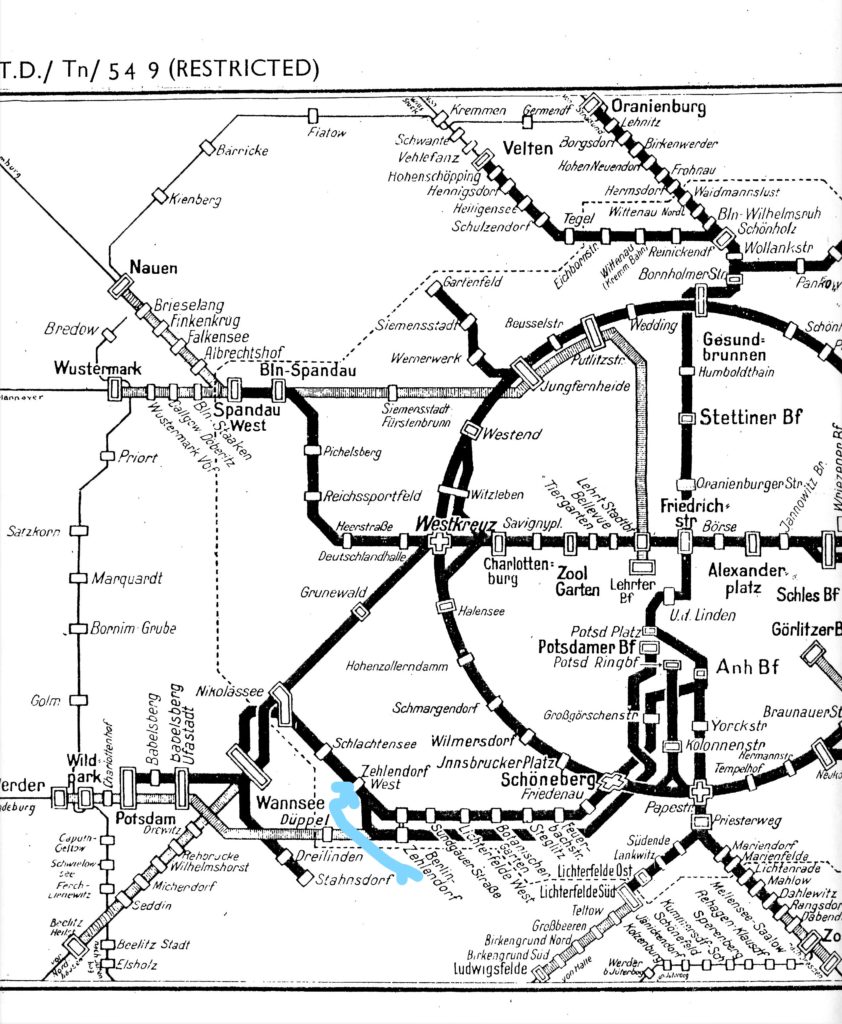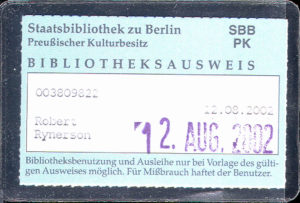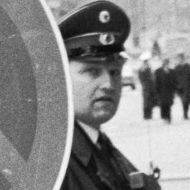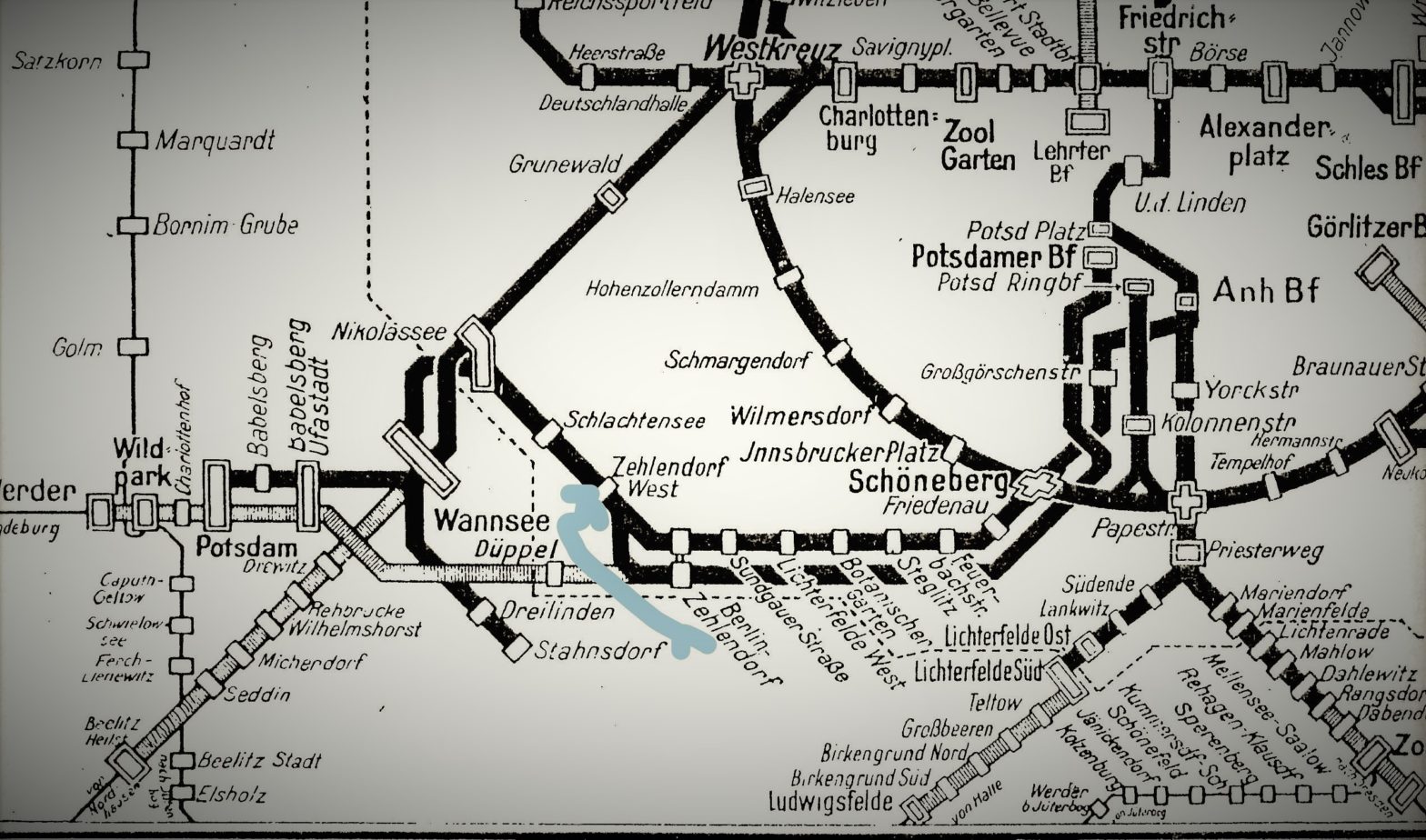The Last Days
In the beginning of the Zehlendorf-West story was the introduction of what became the S-Bahn, including the famed express “bankierzüge”. Both types of service continued through the war, as the wartime system map shows.

Major bombing raids into February 1945 destroyed the Potsdamer Bahnhof, central Berlin terminal for the Bankers’ Trains. The S-Bahn locals soldiered on until 20 April 1945. Five days later the Red Army occupied Zehlendorf.
Fighting continued, so there are disagreements regarding dates and the sequence of events. However, two authors who interviewed surviving civilians found the most agreement as to when their world stopped and was reset to zero: when the batteries were depleted in the dial telephone system. The phones were silent.
Acknowledgements:
Many people have assisted with the 1915-1945 project. I would particularly like to thank Florian Weiss of the Allied Museum Berlin for his help in obtaining the Zehlendorf property book records, Udo Dittfurth of the S-Bahn Museum, the archivists of the Czech National Museum, and the librarians of the State Library of Berlin where I first saw clues that a good story was waiting in tree-shaded Sven-Hedin-Strasse. And, of course, posthumous appreciation for Dr. Robert Cruden of the Lewis & Clark College History Department. Any errors or confusion of the facts are mine and where speculation is necessary I have tried to identify it. There are opportunities in the gaps here for student research projects. — rwr


